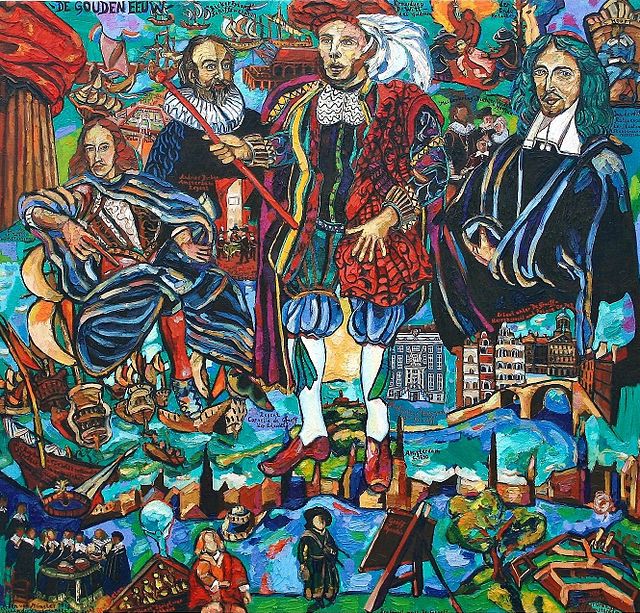Politics and government of the Dutch Republic
The Dutch Republic existed from 1579 to 1795 and was a confederation of seven provinces, which had their own governments and were very independent, and a number of so-called Generality Lands. These latter were governed directly by the States-General, the federal government. The States-General were seated in The Hague and consisted of representatives of each of the seven provinces.
Courtyard of the Amsterdam Stock Exchange, 1653, which underpinned a large part of Amsterdam's wealth.
The Binnenhof in The Hague, the seat of the States-General and the center of Dutch political life.
Coat of arms of the States-General of the United Provinces ("States"/Staten) of the Netherlands. The lion with the arrows, sword, and crown are now part of the Coat of arms of the Netherlands.
Dutch Attack on the Medway, June 1667' Pieter Cornelisz van Soest c. 1667. The captured ship Royal Charles is right of centre.
Johan de Witt, Lord of Zuid- en Noord-Linschoten, Snelrewaard, Hekendorp en IJsselvere, was a Dutch statesman and a major political figure in the Dutch Republic in the mid-17th century, the First Stadtholderless Period, when its flourishing sea trade in a period of global colonisation made the republic a leading European trading and seafaring power – now commonly referred to as the Dutch Golden Age. De Witt was elected Grand pensionary of Holland, and together with his uncle Cornelis de Graeff, he controlled the Dutch political system from around 1650 until the Rampjaar of 1672. This progressive cooperation between the two statesmen, and the consequent support of Amsterdam under the rule of De Graeff, was an important political axis that organized the political system within the republic.
Portrait from the studio of Adriaen Hanneman, 1652
Wendela Bicker
Portrait of Johan de Witt (after Jan de Baen)
Historical-allegorical painting "De Gouden eeuw" about the De Graeff family of the Dutch Golden Age. The painting shows the protagonists around the Amsterdam regent Cornelis de Graeff (middle) and his relatives Johan de Witt (right), Cornelis de Witt (left) and Andries Bicker (second from left) as well as some events from this decade. (Painting by Matthias Laurenz Gräff, 2007)








